This is a list of aircraft in alphabetical order beginning with 'U'.
| Lists of aircraft |
|---|
| List of gliders |
|---|
| By constructor name |
(See: Antonov, Ilyushin, Irkut Corporation, Mikoyan, Sukhoi, Tupolev and Yakovlev)
(Universal Composite Aviation)
(United Consultant Corp, Norwood, MA)
(Udet Flugzeugbau)
(Universal Dynamics Research & Development)
(Walter Uetz Flugzeugbau)
(Ungarische Flugzeugfabrik Abteil Gesellschaft / Ungarische Flugzeugwerke Aktien Gesellschaft)
(UL-Jih Sedláĉek Spol s.r.o.)
(Geoff Price, P.O. Box 15, Whitford, Auckland 2149, New Zealand )
(Ultraleicht Bau International GmbH, Hassfurt, Germany)
(Ultimate Aircraft Corporation, Canada)
(Ultimate Flight Designs, Mounds, OK)
(Braunschweig, Germany)
(Heusden-Zolder, Belgium)
(Ultraflight Sales Limited)
(Cvikov, Česká Lípa District, Liberec Region, Czech Republic)
(Ultralight Flight Inc.)
(Ultralite Soaring Inc)
(Ultravia Aero Inc.)
( (Raymond E) Umbaugh Aircraft Corp, Ocala, FL)
(Yuzo Umeda)
(Ikunosuke Umino)
(Union Aircraft Co, Long Island, NY)
(Union-Flugzeugwerke G.m.b.H)
(Unis Obchodni spol. s.r.o.)
(Tips & Smith Inc (engines), Houston, TX)
(United Aircraft Corp (Pres: Curtis C Baldwin), on acquisition of Lark Aircraft Co, 471 W 1st St, Wichita, KS)
(United Consultants Corporation)
(United Eastern Aeroplane Co, 1251 DeKalb Ave, Brooklyn, NY)
(United Helicopters inc.)
(Universal Aircraft Co, Fort Worth, TX)
(University of Maryland)
(University of Minnesota, Minneapolis, MN)
(UTIAS)
(Marion Unruh & George Albright, Falls Church, VA)
(Garmisch-Partenkirchen, Germany)
(Uzinele de Reparatii Material Volant-3)
(Alfred H Urness & Henry J Hanson, Cashton, WI)
(US Aircraft Corporation)
(U S Airplane Co, 3670 Milwaukee Ave, Chicago, IL)
| Lists of aircraft |
|---|
(Villingen-Schwenningen, Germany)
(Fabrika Aviona Utva: Utva Aircraft Industry) (Serbian: Utva - Wild Duck)
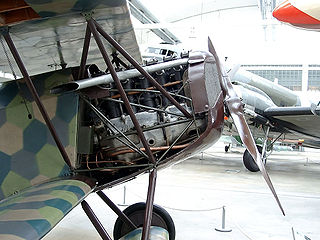
The Mercedes D.III, or F1466 as it was known internally, was a six-cylinder SOHC valvetrain liquid-cooled inline aircraft engine built by Daimler and used on a wide variety of German aircraft during World War I. The initial versions were introduced in 1914 at 160 hp, but a series of changes improved this to 170 hp in 1917, and 180 by mid-1918. These later models were used on almost all late-war German fighters, and its only real competition, the BMW III, was available only in very limited numbers. Compared to the Allied engines it faced, the D.III was generally outdated.

The Hansa-Brandenburg W.29 was a German two-seat fighter floatplane which served in the closing months of World War I with the Imperial German Navy's Naval Air Service from bases on the North Sea coast. In concept the aircraft was a monoplane version of the biplane Hansa-Brandenburg W.12, although there were many structural differences between the two.
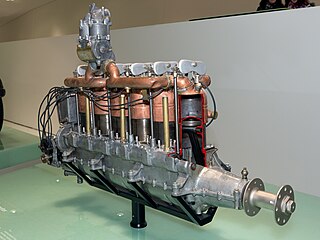
The Austro-Daimler 6 was a series of Austrian six-cylinder water-cooled inline aero engines first produced in 1910 by the Austro-Daimler company.

In 1914 Otto Hieronimus manufactured the six-cylinder Hiero E, also known as the Hiero 6 engine which was derived from earlier 4-cylinder engines. The Hiero engine like the Austro-Daimler powered many of Austria's World War I aircraft. Hiero aircraft engines were designed by Otto Hieronimus, a famous Austrian auto racer of the early 1900s. His initial designs were liquid-cooled inline engines built by the Laurin & Klement Automobile Works of Austria.

The Hansa-Brandenburg C.I, also known as Type LDD, was a 2-seater armed single-engine reconnaissance biplane designed by Ernst Heinkel, who worked at that time for the parent company in Germany. The C.I had similarities with the earlier B.I, including inward-sloping interplane bracing struts. Like other early-war Austro-Hungarian reconnaissance aircraft, such as C-types of Lloyd or Lohner, the Type LDD had a communal cockpit for its crew.

The Hansa-Brandenburg CC was a single-seat German fighter flying boat of World War I. It was used by both the Kaiserliche Marine and the Austro-Hungarian Navy.

The Hansa-Brandenburg D.I, also known as the KD was a German fighter aircraft of World War I. Despite poor handling characteristics it was put into service by Austria-Hungary, where some aircraft served until the end of the war.

The Lohner L was a reconnaissance flying boat produced in Austria-Hungary during World War I. It was a two-bay biplane of typical configuration for the flying boats of the day, with its pusher engine mounted on struts in the interplane gap. The pilot and observer sat side by side in an open cockpit, and both the upper and lower sets of wings featured sweepback.
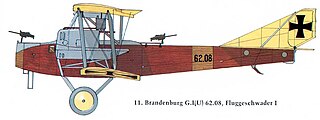
The Hansa-Brandenburg G.I was a bomber aircraft used to equip the Austro-Hungarian aviation corps in World War I. It was a mostly conventional large, three-bay biplane with staggered wings of slightly unequal span. The pilot and bombardier sat in a large open cockpit at the nose of the aircraft, with a second open cockpit for a gunner in a dorsal position behind the wings. An unusual feature was the placement of the twin tractor engines. While the normal practice of the day was to mount these to the wings, either directly or on struts, the G.I had the engines mounted to the sides of the fuselage on lattices of steel struts. This arrangement added considerable weight to the aircraft and transmitted a lot of vibration to the airframe.

The Hansa-Brandenburg W.13 was a flying boat bomber developed in Germany in 1917 and used by the Austro-Hungarian Navy during World War I.
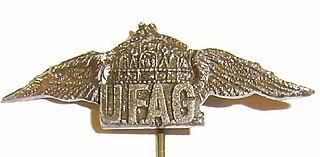
UFAG, was a Hungarian aircraft manufacturer formed by the Ganz Works and the Manfred Weiss Works in Budapest in 1912. They built aircraft of their own design as well as under licence from Lohner and Hansa-Brandenburg.

The Lohner B.I was a military reconnaissance aircraft produced in Austria-Hungary during World War I. As Lohner strove to perfect the design, a variety of increasingly powerful engines were fitted, reflected in a range of military designations from B.II through to B.VI until the definitive B.VII was finally produced. This last version was also produced in an armed variant, designated the C.I.

The Lohner B.II was a military reconnaissance aircraft produced in Austria-Hungary during World War I. It was a development of the pre-war B.I design, incorporating changes requested by the Austro-Hungarian army, but inheriting its predecessor's basic design, including its characteristic swept-back wings.

The unarmed Lohner B.VII and its armed derivative the C.I were military reconnaissance aircraft produced in Austria-Hungary during World War I. They were the ultimate developments in a family of aircraft that had begun with the B.I prior to the outbreak of war, and were the first members of that family that proved suitable for front-line service during the conflict. Like their predecessors, the B.VII and C.I were conventional biplanes with characteristic swept-back wings.

The Phönix C.I, given serial numbers in the Phönix 121 range, was an Austro-Hungarian First World War reconnaissance and general-purpose Biplane built by Phönix and Lloyd.

The UFAG C.I was a military reconnaissance aircraft produced in the Austro-Hungarian Empire during World War I, by the Ungarische Flugzeugfabrik Abteil Gesellschaft (UFAG). It was introduced in April 1918, and was widely used on the Italian Front in the final months of World War I.
The Hansa-Brandenburg C.II, company designation K,, was a two-seat reconnaissance aircraft built in Germany by Hansa-Brandenburg in World War I, powered by Mercedes D.III or Hiero 6 water-cooled in-line piston engines.
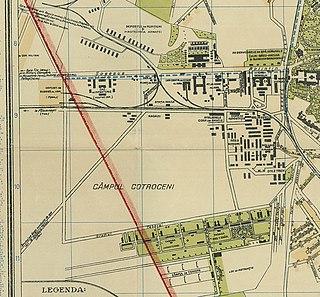
Arsenalul Aeronautic in Bucharest was the first factory with an aeronautical profile in Romania. Its activity took place between 1919 and 1939. Arsenalul Aeronautic manufactured three models of aircraft: Hansa-Brandenburg C.I, Proto 1 and Aeron and modified De Havilland aircraft for passenger and freight transport. Also, at the Aeronautical Arsenal, research in the field of study and testing of materials was organized.